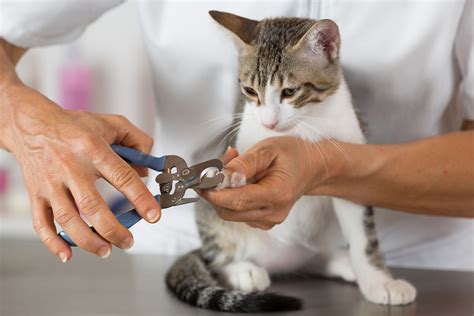Introduction

Dental health is a crucial aspect of a cat’s overall well-being. Neglecting proper dental care can lead to a myriad of health issues, including pain, infections, and even premature death. This comprehensive guide will provide you with the essential knowledge and practical tips to ensure your feline companion’s dental health thrives in 2025 and beyond.
Section 1: Understanding Cat Dental Anatomy
Your cat’s mouth is a complex and fascinating system. Understanding its anatomy is key to providing effective dental care:
-
Teeth: Cats have 30 teeth, divided into incisors, canines, premolars, and molars. These teeth have different shapes and functions for gripping, chewing, and tearing.
-
Gums: Healthy gums are pink and firm, providing support for the teeth. Gum disease, known as gingivitis, occurs when the gums become inflamed and infected.
-
Tongue: The tongue aids in cleaning the teeth, removing food particles and debris. It also helps control body temperature.
Section 2: Common Dental Problems in Cats
Several dental problems can affect cats, including:
-
Gingivitis: A common condition characterized by inflamed and bleeding gums.
-
Periodontal Disease: A severe infection that affects the gums and supporting structures of the teeth, often leading to tooth loss.
-
Tooth Decay: Less common in cats than in other species, but it can occur if plaque and tartar accumulate on the teeth.
-
Tooth Resorption: A painful condition where the body attacks its own teeth, causing them to weaken and break down.
Section 3: Recognizing Signs of Dental Problems
Early detection and treatment of dental problems is essential for your cat’s health. Watch out for the following signs:
-
Bad breath
-
Drooling
-
Difficulty eating
-
Swollen or bleeding gums
-
Pawing at the mouth
-
Weight loss
Section 4: Establishing a Dental Care Routine
A comprehensive dental care routine is the cornerstone of maintaining your cat’s oral health:
– Daily Brushing: Aim to brush your cat’s teeth daily using a soft-bristled toothbrush and cat-specific toothpaste.
– Professional Cleanings: Regular professional cleanings are essential for removing plaque and tartar buildup. Plan to have your cat’s teeth cleaned at a veterinary clinic every 6 to 12 months.
– Dental Diets: Some pet food brands offer specialized diets designed to support dental health, reducing plaque and tartar accumulation.
– Dental Treats: Dental treats can help clean your cat’s teeth and provide breath freshening benefits.
Section 5: Home Dental Care Tips
In addition to regular professional cleanings, there are several home care tips you can implement to improve your cat’s dental health:
-
Offer Chew Toys: Chewing on toys helps clean teeth by removing plaque and stimulating blood flow to the gums.
-
Provide Dry Food: Dry food helps scrape away plaque and tartar from the teeth as cats chew.
-
Encourage Water Intake: Good hydration helps reduce the buildup of bacteria in the mouth.
Section 6: Common Mistakes to Avoid
Avoid these common mistakes that can compromise your cat’s dental health:
-
Ignoring Signs of Dental Problems: Delaying treatment for dental issues can worsen the condition and cause further health complications.
-
Using Human Toothpaste: Human toothpaste can contain ingredients that are toxic to cats. Always use cat-specific toothpaste.
-
Brushing Too Hard: Brushing your cat’s teeth too forcefully can damage the gums and cause discomfort.
Section 7: Future Trends in Cat Dental Care
As technology advances, new and innovative approaches to cat dental care are emerging:
-
Advanced Imaging Techniques: These techniques provide highly detailed images of the teeth and gums, aiding in early diagnosis and treatment planning.
-
Minimally Invasive Dentistry: Less invasive procedures, such as laser therapy, are becoming increasingly common for treating dental problems with greater precision and reduced discomfort.
-
Personalized Dental Plans: Veterinarians are adopting tailored dental care plans based on the individual needs and risk factors of each cat.
Conclusion
Maintaining your cat’s dental health is paramount for their overall well-being. By following the comprehensive guidelines outlined in this guide, you can effectively prevent and treat dental problems, ensuring a healthy and happy life for your feline companion well into 2025 and beyond. Remember to consult your veterinarian regularly for professional advice and personalized dental care recommendations.
Additional Resources
Table 1: Common Dental Problems in Cats
| Dental Problem | Symptoms |
|—|—|
| Gingivitis | Inflamed and bleeding gums |
| Periodontal Disease | Severe gum infection, leading to tooth loss |
| Tooth Decay | Cavities or holes in the teeth |
| Tooth Resorption | Body attacks and destroys its own teeth |
Table 2: Dental Care Routine for Cats
| Activity | Frequency |
|—|—|
| Tooth Brushing | Daily |
| Professional Cleanings | Every 6-12 months |
| Dental Diets | As recommended by veterinarian |
| Dental Treats | As needed |
Table 3: Home Dental Care Tips for Cats
| Tip | Benefits |
|—|—|
| Offer Chew Toys | Helps clean teeth and stimulate gums |
| Provide Dry Food | Helps scrape away plaque and tartar |
| Encourage Water Intake | Reduces bacteria buildup in the mouth |
Table 4: Common Mistakes to Avoid in Cat Dental Care
| Mistake | Consequences |
|—|—|
| Ignoring Signs of Dental Problems | Worsened condition and health complications |
| Using Human Toothpaste | Toxicity to cats |
| Brushing Too Hard | Damaged gums and discomfort |





















